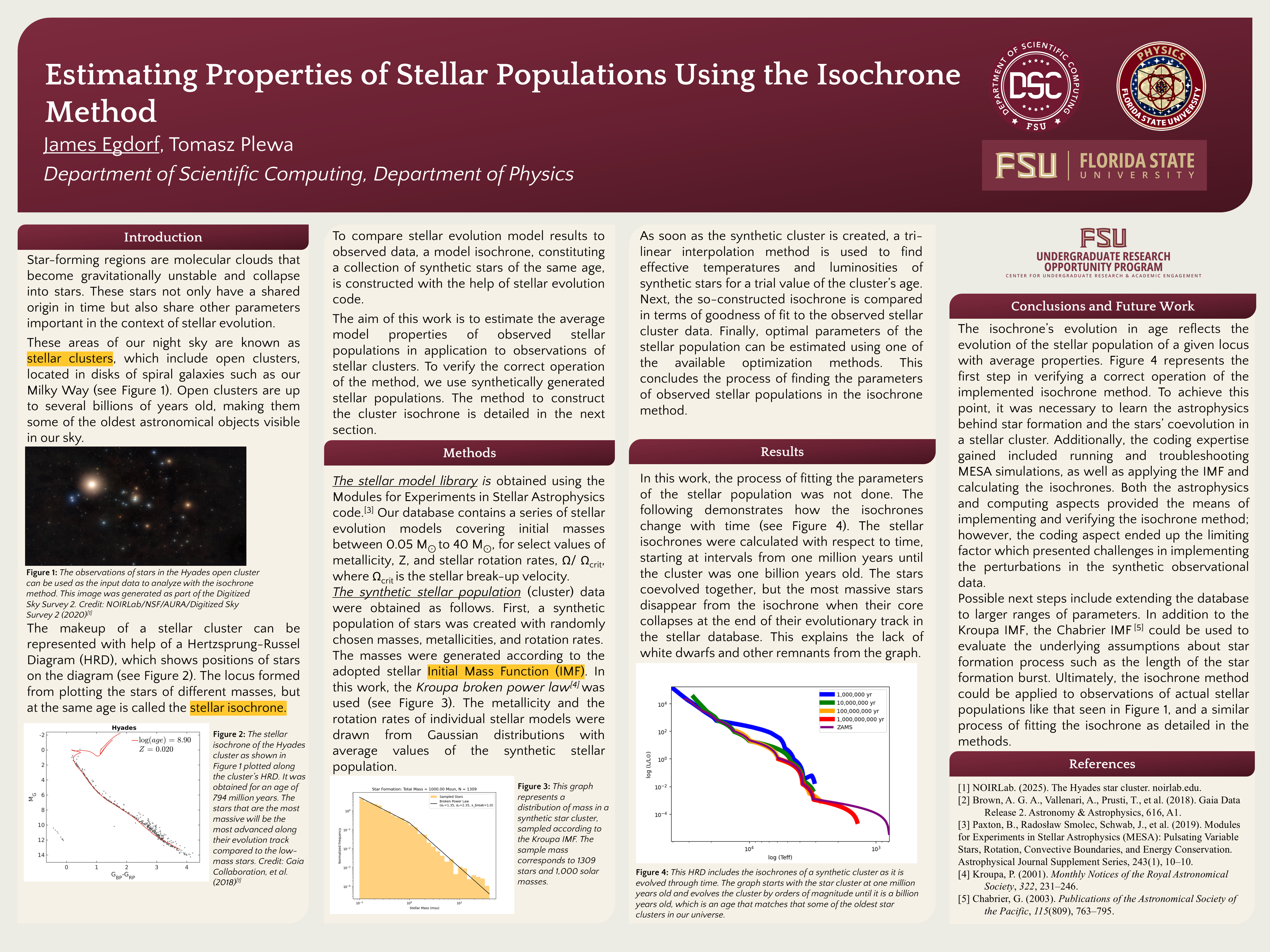Research Symposium
25th annual Undergraduate Research Symposium, April 1, 2025
Jimmy Egdorf Poster Session 2: 10:45 am - 11:45 am/ Poster #162

BIO
Jimmy Egdorf is a first-year undergraduate at Florida State University pursuing degrees in the Department of Physics and Department of Scientific Computing. In addition to research, Jimmy works as a lab technician for the Physics department and is an officer for the Florida State chapter of Society of Physics Students (SPS). The project on stellar clusters that Jimmy worked on for URS was presented prior at the Florida Undergraduate Research Conference at University of South Florida in Tampa. In the future, he plans on continuing research here at FSU.
Estimating Properties of Stellar Populations Using the Isochrone Method
Authors: Jimmy Egdorf, Tomasz PlewaStudent Major: Physics, Scientific Computing
Mentor: Tomasz Plewa
Mentor's Department: Department of Scientific Computing Mentor's College: College of Arts and Sciences Co-Presenters:
Abstract
Observations indicate stars form from gas and dust concentrated within molecular clouds. It is believed that star-formation events, short-lived and localized in space, are the origin of what are aptly named as stellar clusters. A Hertzsprung-Russel (HR) diagram defines the distribution of stars in the cluster through temperature and luminosity. This distribution compares average properties such as age, metallicity, and rotation rates between clusters through a locus, known as an isochrone. This work aims to infer properties of astronomical observations clusters through the isochrone method.
Synthetic isochrones were obtained through stellar modeling. The distribution of masses used for a given stellar population was generated according to the adopted initial mass function (IMF) to determine the distribution of stellar masses at their birth. A tri-linear interpolation method was used to find corresponding values of effective temperatures and luminosities for each member of the synthetic population. These were calculated using a stellar library stemming from Modules for Experiments in Stellar Astrophysics (MESA) code, and the synthetic cluster was populated.
Obtaining the isochrones of the synthetic cluster for different ages and placing them on the HR diagram verified the correct implementation of the isochrone method. Continuing this method could better estimate the age and secondary parameters, to understand how the stars in our sky were formed. The isochrones eventually may be compared to astronomical data to clarify aspects of stellar evolution with better accuracy and at a lower computational cost.
Keywords: Astrophysics, computational sciences, stars


